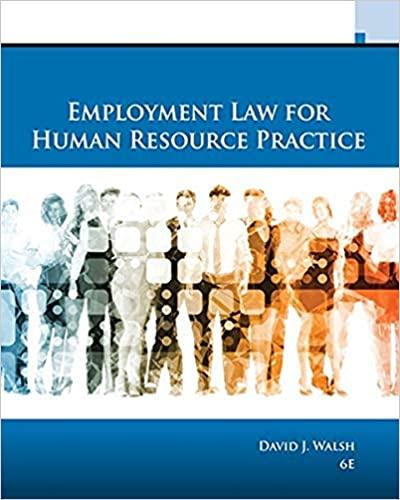Estrada sued her former employer, Wal-Mart alleging that the Asset Protection Manager, Durham, wrongfully accused her of
Question:
Estrada sued her former employer, Wal-Mart alleging that the Asset Protection Manager, Durham, wrongfully accused her of embezzling $4,000, false imprisoned her during a related interrogation, and fraudulently induced her to sign a form acknowledging that she owed Wal-Mart $900. After she signed the form, and allegedly because she signed it, Wal-Mart fired her for “Gross Misconduct – Integrity Issue.” Estrada brought claims for false imprisonment, fraud, intentional infliction of emotional distress and defamation.
1.) What were the legal issues in this case? What did the court decide?
2.) What things need to be shown by plaintiffs in false imprisonment claims? Why does the court allow the false imprisonment claim in this case to go forward? Given what we know about the facts of this case, do you think that the plaintiff was falsely imprisoned? Why or why not?
3.) The plaintiff also brought fraud and infliction of emotional distress claims. What are the elements of each of these claims? Why does the court allow the plaintiff’s fraud and infliction of emotional distress claims to go forward?
4.) What is the theory of “compelled self-publication”? Why does the plaintiff’s defamation claim fail?
5.) From a practical standpoint, what are some things that this employer should have done differently in handling this situation?
Step by Step Answer:






